- Home
- Isaac Asimov
Foundation's Edge Page 9
Foundation's Edge Read online
Page 9
“And that,” said Trevize, “is Trantor’s sun.”
Another sigh, then Pelorat said, “Are you sure? They always speak of Trantor as being located in the center of the Galaxy.”
“It is, in a way. It’s as close to the center as a planet can get and still be habitable. It’s closer than any other major populated system. The actual center of the Galaxy consists of a black hole with a mass of nearly a million stars, so that the center is a violent place. As far as we know, there is no life in the actual center and maybe there just can’t be any life there. Trantor is in the innermost subring of the spiral arms and, believe me, if you could see its night sky, you would think it was in the center of the Galaxy. It’s surrounded by an extremely rich clustering of stars.”
“Have you been on Trantor, Golan?” asked Pelorat in clear envy.
“Actually no, but I’ve seen holographic representations of its sky.”
Trevize stared at the Galaxy somberly. In the great search for the Second Foundation during the time of the Mule, how everyone had played with Galactic maps—and how many volumes had been written and filmed on the subject.
And all because Hari Seldon had said, at the beginning, that the Second Foundation would be established “at the other end of the Galaxy,” calling the place “Star’s End.”
At the other end of the Galaxy! Even as Trevize thought it, a thin blue line sprang into view, stretching from Terminus, through the Galaxy’s central black hole, to the other end. Trevize nearly jumped. He had not directly ordered the line, but he had thought of it quite clearly and that had been enough for the computer.
But, of course, the straight-line route to the opposite side of the Galaxy was not necessarily an indication of the “other end” that Seldon had spoken of. It was Arkady Darell (if one could believe her autobiography) who had made use of the phrase “a circle has no end” to indicate what everyone now accepted as truth—
And though Trevize suddenly tried to suppress the thought, the computer was too quick for him. The blue line vanished and was replaced with a circle that neatly rimmed the Galaxy in blue and that passed through the deep red dot of Terminus’s sun.
A circle has no end, and if the circle began at Terminus, then if we searched for the other end, it would merely return to Terminus, and there the Second Foundation had indeed been found, inhabiting the same world as the First.
But if, in reality, it had not been found—if the so-called finding of the Second Foundation had been an illusion—what then? What beside a straight line and a circle would make sense in this connection?
Pelorat said, “Are you creating illusions? Why is there a blue circle?”
“I was just testing my controls. —Would you like to locate Earth?”
There was silence for a moment or two, then Pelorat said, “Are you joking?”
“No. I’ll try.”
He did. Nothing happened.
“Sorry,” said Trevize.
“It’s not there? No Earth?”
“I suppose I might have misthought my command, but that doesn’t seem likely. I suppose it’s more likely that Earth isn’t listed in the computer’s vitals.”
Pelorat said, “It may be listed under another name.”
Trevize jumped at that quickly, “What other name, Janov?”
Pelorat said nothing and, in the darkness, Trevize smiled. It occurred to him that things might just possibly be falling into place. Let it go for a while. Let it ripen. He deliberately changed the subject and said, “I wonder if we can manipulate time.”
“Time! How can we do that?”
“The Galaxy is rotating. It takes nearly half a billion years for Terminus to move about the grand circumference of the Galaxy once. Stars that are closer to the center complete the journey much more quickly, of course. The motion of each star, relative to the central black hole, might be recorded in the computer and, if so, it may be possible to have the computer multiply each motion by millions of times and make the rotational effect visible. I can try to have it done.”
He did and he could not help his muscles tightening with the effort of will he was exerting—as though he were taking hold of the Galaxy and accelerating it, twisting it, forcing it to spin against terrible resistance.
The Galaxy was moving. Slowly, mightily, it was twisting in the direction that should be working to tighten the spiral arms.
Time was passing incredibly rapidly as they watched—a false, artificial time—and, as it did so, stars became evanescent things.
Some of the larger ones—here and there—reddened and grew brighter as they expanded into red giants. And then a star in the central clusters blew up soundlessly in a blinding blaze that, for a tiny fraction of a second, dimmed the Galaxy and then was gone. Then another in one of the spiral arms, then still another not very far away from it.
“Supernovas,” said Trevize a little shakily.
Was it possible that the computer could predict exactly which stars would explode and when? Or was it just using a simplified model that served to show the starry future in general terms, rather than precisely?
Pelorat said in a husky whisper, “The Galaxy looks like a living thing, crawling through space.”
“It does,” said Trevize, “but I’m growing tired. Unless I learn to do this less tensely, I’m not going to be able to play this kind of game for long.”
He let go. The Galaxy slowed, then halted, then tilted, until it was in the view-from-the-side from which they had seen it at the start.
Trevize closed his eyes and breathed deeply. He was aware of Terminus shrinking behind them, with the last perceptible wisps of atmosphere gone from their surroundings. He was aware of all the ships filling Terminus’s near-space.
It did not occur to him to check whether there was anything special about any one of those ships. Was there one that was gravitic like his own and matched his trajectory more closely than chance would allow?
5
SPEAKER
1.
TRANTOR!
For eight thousand years, it was the capital of a large and mighty political entity that spanned an ever-growing union of planetary systems. For twelve thousand years after that, it was the capital of a political entity that spanned the entire Galaxy. It was the center, the heart, the epitome of the Galactic Empire.
It was impossible to think of the Empire without thinking of Trantor.
Trantor did not reach its physical peak until the Empire was far gone in decay. In fact, no one noticed that the Empire had lost its drive, its forward look, because Trantor gleamed in shining metal.
Its growth had peaked at the point where it was a planet-girdling city. Its population was stabilized (by law) at forty-five billion and the only surface greenery was at the Imperial Palace and the Galactic University / Library complex.
Trantor’s land surface was metal-coated. Its deserts and its fertile areas were alike engulfed and made into warrens of humanity, administrative jungles, computerized elaborations, vast storehouses of food and replacement parts. Its mountain ranges were beaten down; its chasms filled in. The city’s endless corridors burrowed under the continental shelves and the oceans were turned into huge underground aquacultural cisterns—the only (and insufficient) native source of food and minerals.
The connections with the Outer Worlds, from which Trantor obtained the resources it required, depended upon its thousand spaceports, its ten thousand warships, its hundred thousand merchant ships, its million space freighters.
No city so vast was ever recycled so tightly. No planet in the Galaxy had ever made so much use of solar power or went to such extremes to rid itself of waste heat. Glittering radiators stretched up into the thin upper atmosphere upon the nightside and were withdrawn into the metal city on the dayside. As the planet turned, the radiators rose as night progressively fell around the world and sank as day progressively broke. So Trantor always had an artificial asymmetry that was almost its symbol.
At this peak, Trantor
ran the Empire!
It ran it poorly, but nothing could have run the Empire well. The Empire was too large to be run from a single world—even under the most dynamic of Emperors. How could Trantor have helped but run it poorly when, in the ages of decay, the Imperial crown was traded back and forth by sly politicians and foolish incompetents and the bureaucracy had become a subculture of corruptibles?
But even at its worst, there was some self-propelled worth to the machinery. The Galactic Empire could not have been run without Trantor.
The Empire crumbled steadily, but as long as Trantor remained Trantor, a core of the Empire remained and it retained an air of pride, of millennia, of tradition and power and—exaltation.
Only when the unthinkable happened—when Trantor finally fell and was sacked; when its citizens were killed by the millions and left to starve by the billions; when its mighty metal coating was scarred and punctured and fused by the attack of the “barbarian” fleet—only then was the Empire considered to have fallen. The surviving remnants on the once-great world undid further what had been left and, in a generation, Trantor was transformed from the greatest planet the human race had ever seen to an inconceivable tangle of ruins.
That had been nearly two and a half centuries ago. In the rest of the Galaxy, Trantor-as-it-had-been still was not forgotten. It would live forever as the favored site of historical novels, the favored symbol and memory of the past, the favored word for sayings such as “All starships land on Trantor,” “Like looking for a person in Trantor,” and “No more alike than this and Trantor.”
In all the rest of the Galaxy—
But that was not true on Trantor itself! Here the old Trantor was forgotten. The surface metal was gone, almost everywhere. Trantor was now a sparsely settled world of self-sufficient farmers, a place where trading ships rarely came and were not particularly welcome when they did come. The very word “Trantor,” though still in official use, had dropped out of popular speech. By present-day Trantorians, it was called “Hame,” which in their dialect was what would be called “Home” in Galactic Standard.
Quindor Shandess thought of all this and much more as he sat quietly in a welcome state of half-drowse, in which he could allow his mind to run along a self-propelled and unorganized stream of thought.
He had been First Speaker of the Second Foundation for eighteen years, and he might well hold on for ten or twelve years more if his mind remained reasonably vigorous and if he could continue to fight the political wars.
He was the analog, the mirror image, of the Mayor of Terminus, who ruled over the First Foundation, but how different they were in every respect. The Mayor of Terminus was known to all the Galaxy and the First Foundation was therefore simply “the Foundation” to all the worlds. The First Speaker of the Second Foundation was known only to his associates.
And yet it was the Second Foundation, under himself and his predecessors, who held the real power. The First Foundation was supreme in the realm of physical power, of technology, of war weapons. The Second Foundation was supreme in the realm of mental power, of the mind, of the ability to control. In any conflict between the two, what would it matter how many ships and weapons the First Foundation disposed of, if the Second Foundation could control the minds of those who controlled the ships and weapons?
But how long could he revel in this realization of secret power?
He was the twenty-fifth First Speaker and his incumbency was already a shade longer than average. Ought he, perhaps, not be too keen on holding on and keeping out the younger aspirants? There was Speaker Gendibal, the keenest and newest at the Table. Tonight they would spend time together and Shandess looked forward to it. Ought he look forward also to Gendibal’s possible accession some day?
The answer to the question was that Shandess had no real thought of leaving his post. He enjoyed it too much.
He sat there, in his old age, still perfectly capable of performing his duties. His hair was gray, but it had always been light in color and he wore it cut an inch long so that the color scarcely mattered. His eyes were a faded blue and his clothing conformed to the drab styling of the Trantorian farmers.
The First Speaker could, if he wished, pass among the Hamish people as one of them, but his hidden power nevertheless existed. He could choose to focus his eyes and mind at any time and they would then act according to his will and recall nothing about it afterward.
It rarely happened. Almost never. The Golden Rule of the Second Foundation was, “Do nothing unless you must, and when you must act—hesitate.”
The First Speaker sighed softly. Living in the old University, with the brooding grandeur of the ruins of the Imperial Palace not too far distant, made one wonder on occasion how Golden the Rule might be.
In the days of the Great Sack, the Golden Rule had been strained to the breaking point. There was no way of saving Trantor without sacrificing the Seldon Plan for establishing a Second Empire. It would have been humane to spare the forty-five billion, but they could not have been spared without retention of the core of the First Empire and that would have only delayed the reckoning. It would have led to a greater destruction some centuries later and perhaps no Second Empire ever—
The early First Speakers had worked over the clearly foreseen Sack for decades but had found no solution—no way of assuring both the salvation of Trantor and the eventual establishment of the Second Empire. The lesser evil had to be chosen and Trantor had died!
The Second Foundationers of the time had managed—by the narrowest of margins—to save the University / Library complex and there had been guilt forever after because of that, too. Though no one had ever demonstrated that saving the complex had led to the meteoric rise of the Mule, there was always the intuition that there was a connection.
How nearly that had wrecked everything!
Yet following the decades of the Sack and the Mule came the Golden Age of the Second Foundation.
Prior to that, for over two and a half centuries after Seldon’s death, the Second Foundation had burrowed like moles into the Library, intent only on staying out of the way of the Imperials. They served as librarians in a decaying society that cared less and less for the ever-more-misnamed Galactic Library, which fell into the desuetude that best suited the purpose of the Second Foundation.
It was an ignoble life. They merely conserved the Plan, while out at the end of the Galaxy, the First Foundation fought for its life against always greater enemies with neither help from the Second Foundation nor any real knowledge of it.
It was the Great Sack that liberated the Second Foundation—another reason (young Gendibal—who had courage—had recently said that it was the chief reason) why the Sack was allowed to proceed.
After the Great Sack, the Empire was gone and, in all the later times, the Trantorian survivors never trespassed on Second Foundation territory uninvited. The Second Foundationers saw to it that the University / Library complex which had survived the Sack also survived the Great Renewal. The ruins of the Palace were preserved, too. The metal was gone over almost all the rest of the world. The great and endless corridors were covered up, filled in, twisted, destroyed, ignored; all under rock and soil—all except here, where metal still surrounded the ancient open places.
It might be viewed as a grand memorial of greatness, the sepulcher of Empire, but to the Trantorians—the Hamish people—these were haunted places, filled with ghosts, not to be stirred. Only the Second Foundationers ever set foot in the ancient corridors or touched the titanium gleam.
And even so, all had nearly come to nothing because of the Mule.
The Mule had actually been on Trantor. What if he had found out the nature of the world he had been standing on? His physical weapons were far greater than those at the disposal of the Second Foundation, his mental weapons almost as great. The Second Foundation would have been hampered always by the necessity of doing nothing but what they must, and by the knowledge that almost any hope of winning the immediate fight mig
ht portend a greater eventual loss.
Had it not been for Bayta Darell and her swift moment of action—And that, too, had been without the help of the Second Foundation!
And then—the Golden Age, when somehow the First Speakers of the time found ways of becoming active, stopping the Mule in his career of conquest, controlling his mind at last; and then stopping the First Foundation itself when it grew wary and overcurious concerning the nature and identity of the Second Foundation. There was Preem Palver, nineteenth First Speaker and greatest of them all, who had managed to put an end to all danger—not without terrible sacrifice—and who had rescued the Seldon Plan.
Now, for a hundred and twenty years, the Second Foundation was again as it once had been, hiding in a haunted portion of Trantor. They were hiding no longer from the Imperials, but from the First Foundation still—a First Foundation almost as large as the Galactic Empire had been and even greater in technological expertise.
The First Speaker’s eyes closed in the pleasant warmth and he passed into that never-never state of relaxing hallucinatory experiences that were not quite dreams and not quite conscious thought.
Enough of gloom. All would be well. Trantor was still capital of the Galaxy, for the Second Foundation was here and it was mightier and more in control than ever the Emperor had been.
The First Foundation would be contained and guided and would move correctly. However formidable their ships and weapons, they could do nothing as long as key leaders could be, at need, mentally controlled.
And the Second Empire would come, but it would not be like the first. It would be a Federated Empire, with its parts possessing considerable self-rule, so that there would be none of the apparent strength and actual weakness of a unitary, centralized government. The new Empire would be looser, more pliant, more flexible, more capable of withstanding strain, and it would be guided always—always—by the hidden men and women of the Second Foundation. Trantor would then be still the capital, more powerful with its forty thousand psychohistorians than ever it had been with its forty-five billion—

 The Return of the Black Widowers
The Return of the Black Widowers The Stars, Like Dust
The Stars, Like Dust Foundation
Foundation David Starr Space Ranger
David Starr Space Ranger I, Robot
I, Robot Puzzles of the Black Widowers
Puzzles of the Black Widowers Casebook of the Black Widowers
Casebook of the Black Widowers The Ugly Little Boy
The Ugly Little Boy Azazel
Azazel Pebble in the Sky
Pebble in the Sky Foundation and Empire
Foundation and Empire The Complete Robot
The Complete Robot Fantastic Voyage
Fantastic Voyage Foundation and Earth
Foundation and Earth The Naked Sun
The Naked Sun The Currents of Space
The Currents of Space Foundation's Edge
Foundation's Edge The Robots of Dawn
The Robots of Dawn Nightfall
Nightfall The Caves of Steel
The Caves of Steel Prelude to Foundation
Prelude to Foundation Nemesis
Nemesis Robot Dreams
Robot Dreams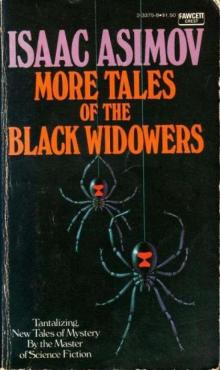 More Tales of the Black Widowers
More Tales of the Black Widowers The Complete Stories
The Complete Stories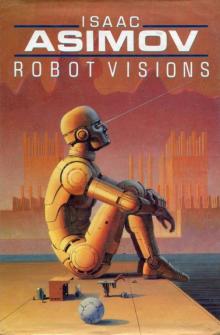 Robot Visions
Robot Visions Lucky Starr And The Moons of Jupiter
Lucky Starr And The Moons of Jupiter Lucky Starr and the Big Sun of Mercury
Lucky Starr and the Big Sun of Mercury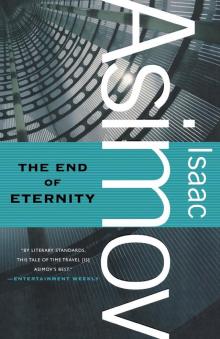 The End of Eternity
The End of Eternity The Bicentennial Man and Other Stories
The Bicentennial Man and Other Stories Lucky Starr And The Rings Of Saturn
Lucky Starr And The Rings Of Saturn Buy Jupiter and Other Stories
Buy Jupiter and Other Stories Forward the Foundation
Forward the Foundation Lucky Starr and the Oceans of Venus
Lucky Starr and the Oceans of Venus The Positronic Man
The Positronic Man The Portable Star
The Portable Star Asimovs Mysteries
Asimovs Mysteries Earth Is Room Enough
Earth Is Room Enough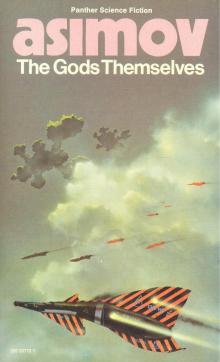 The Gods Themselves
The Gods Themselves Youth
Youth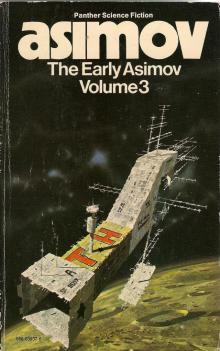 The Early Asimov Volume 3
The Early Asimov Volume 3 The Winds of Change and Other Stories
The Winds of Change and Other Stories Of Time, Space, and Other Things
Of Time, Space, and Other Things Nine Tomorrows
Nine Tomorrows Time Warps
Time Warps Robots and Empire
Robots and Empire Young Star Travelers
Young Star Travelers Fantastic Voyage II: Destination Brain
Fantastic Voyage II: Destination Brain Second Foundation
Second Foundation The Rest of the Robots
The Rest of the Robots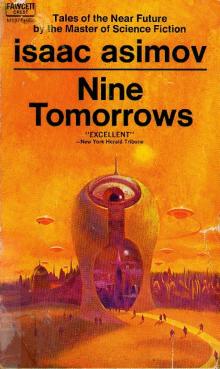 NINE TOMORROWS Tales of the Near Future
NINE TOMORROWS Tales of the Near Future Daneel Olivaw 1 - The Caves of Steel
Daneel Olivaw 1 - The Caves of Steel THE BICENTENNIAL MAN
THE BICENTENNIAL MAN David Starr Space Ranger (lucky starr)
David Starr Space Ranger (lucky starr)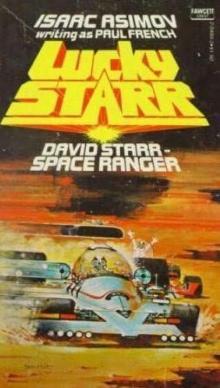 David Starr Space Ranger (ls)
David Starr Space Ranger (ls) Lucky Starr And The Big Sun Of Mercury ls-4
Lucky Starr And The Big Sun Of Mercury ls-4 Pebble In The Sky te-1
Pebble In The Sky te-1 Asimov’s Future History Volume 9
Asimov’s Future History Volume 9 Gold: The Final Science Fiction Collection
Gold: The Final Science Fiction Collection Foundation and Earth f-7
Foundation and Earth f-7 Asimov's New Guide to Science
Asimov's New Guide to Science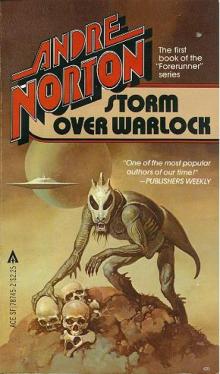 STORM OVER WARLOCK
STORM OVER WARLOCK Stars, Like Dust
Stars, Like Dust Norby The Mixed-Up Robot
Norby The Mixed-Up Robot Found!
Found! Asimov’s Future History Volume 11
Asimov’s Future History Volume 11 Second Foundation f-5
Second Foundation f-5 Asimov’s Future History Volume 15
Asimov’s Future History Volume 15 The Early Asimov. Volume 1
The Early Asimov. Volume 1 Secound Foundation
Secound Foundation Daneel Olivaw 3 - The Robots of Dawn
Daneel Olivaw 3 - The Robots of Dawn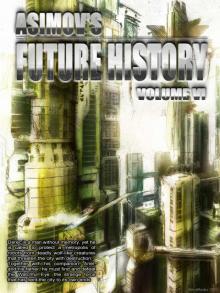 Asimov’s Future History Volume 6
Asimov’s Future History Volume 6 The Early Asimov. Volume 2
The Early Asimov. Volume 2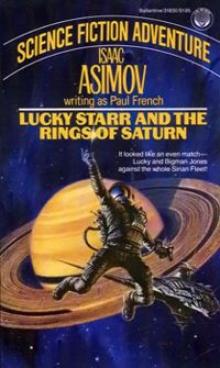 Lucky Starr And The Rings Of Saturn ls-6
Lucky Starr And The Rings Of Saturn ls-6 100 Malicious Little Mysteries
100 Malicious Little Mysteries Forward the Foundation f-2
Forward the Foundation f-2 I.Asimov: A Memoir
I.Asimov: A Memoir Foundation's Edge f-6
Foundation's Edge f-6 Lucky Starr and the Pirates of the Asteroids ls-2
Lucky Starr and the Pirates of the Asteroids ls-2 Robot City 1 & 2
Robot City 1 & 2 The Fourth Science Fiction Megapack
The Fourth Science Fiction Megapack Asimov’s Future History Volume 16
Asimov’s Future History Volume 16 The Dim Rumble
The Dim Rumble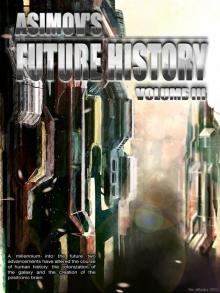 Asimov's Future History Volume 3
Asimov's Future History Volume 3 The Currents Of Space te-3
The Currents Of Space te-3 Asimov’s Guide To Shakespear. Volume 1
Asimov’s Guide To Shakespear. Volume 1 Asimov’s Future History Volume 13
Asimov’s Future History Volume 13 Asimov’s Future History Volume 12
Asimov’s Future History Volume 12 The Secret Sense
The Secret Sense Of Time and Space and Other Things
Of Time and Space and Other Things Norby tnc-2
Norby tnc-2 Norby The Mixed-Up Robot tnc-1
Norby The Mixed-Up Robot tnc-1 Misbegotten Missionary
Misbegotten Missionary Asimov’s Future History Volume 19
Asimov’s Future History Volume 19 Fantastic Voyage II: Destination Brain fv-2
Fantastic Voyage II: Destination Brain fv-2 Asimov’s Future History Volume 10
Asimov’s Future History Volume 10 Asimov's Future History Volume 2
Asimov's Future History Volume 2 Feeling of Power
Feeling of Power In the Beginning
In the Beginning The Caves of Steel trs-1
The Caves of Steel trs-1 Asimov's Future History Vol 2
Asimov's Future History Vol 2 Caliban c-1
Caliban c-1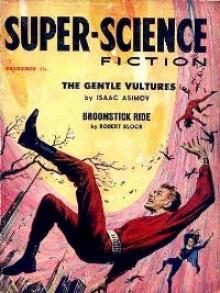 The Gentle Vultures
The Gentle Vultures Utopia c-3
Utopia c-3 Prelude to Foundation f-1
Prelude to Foundation f-1 Short Stories Vol.1
Short Stories Vol.1 Asimov’s Future History Volume 8
Asimov’s Future History Volume 8 Daneel Olivaw 4 - Robots and Empire
Daneel Olivaw 4 - Robots and Empire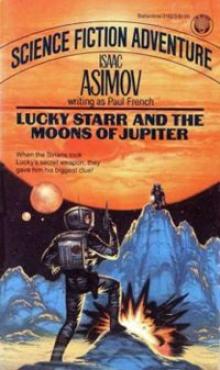 Lucky Starr The And The Moons of Jupiter ls-5
Lucky Starr The And The Moons of Jupiter ls-5 Gold
Gold Asimov’s Future History Volume 4
Asimov’s Future History Volume 4 Foundation and Empire f-4
Foundation and Empire f-4 Potential
Potential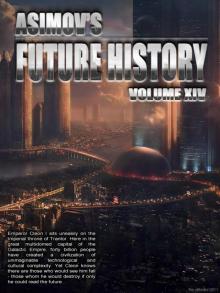 Asimov’s Future History Volume 14
Asimov’s Future History Volume 14 Asimov’s Future History Volume 7
Asimov’s Future History Volume 7 Daneel Olivaw 2 - The Naked Sun
Daneel Olivaw 2 - The Naked Sun Lucky Starr and the Pirates of the Asteroids
Lucky Starr and the Pirates of the Asteroids Foundation f-3
Foundation f-3 All the Troubles of the World
All the Troubles of the World Cleon the Emperor
Cleon the Emperor Asimov's Future History Volume 5
Asimov's Future History Volume 5 Asimov’s Future History Volume 20
Asimov’s Future History Volume 20 Robots and Empire trs-4
Robots and Empire trs-4 Profession
Profession It's Been a Good Life
It's Been a Good Life The Robots of Dawn trs-3
The Robots of Dawn trs-3 Lucky Starr And The Oceanf Of Venus ls-3
Lucky Starr And The Oceanf Of Venus ls-3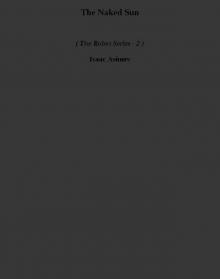 The Naked Sun trs-2
The Naked Sun trs-2 Asimov's Future History Volume 1
Asimov's Future History Volume 1